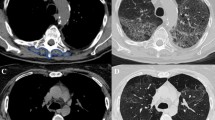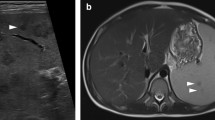Abstract
In traumatic rupture, it is often not possible to repair the spleen. Splenectomy results in increased susceptibility to sepsis with a high mortality rate. Autotransplantation of splenic tissue has been suggested, but its functional value is still in doubt, particularly the ability of autotransplanted spleen to resist intravenous bacterial challenge. The ability to sequestrate denatured99mTc (technetium-99m) RBC (red blood cells) and to resist intravenous pneumococci was studied in sham-operated (control) rats, splenectomized rats, and splenectomized rats with autotransplanted spleen. Histopathologic tests were also performed. There was a gradual increase in the splenic sequestration of the denatured99mTc RBC with a spleen-to-blood ratio of 0.19 to 1.5 at 2 and 30 weeks after the splenic reimplantation. Prior to 18 weeks after the splenic autotransplantation, no rat survived the intravenous pneumococcal challenge, but at 28–30 weeks, 80% of the rats survived the challenge indicating an increased splenic activity at this time. There was also a corresponding increase in splenic tissue weight from 241 mg at the time of autotransplantation to 417 mg beginning at the 24th week after the reimplantation. Four to 5 weeks after the transplantation, the spleens had a fairly normal histological architecture. The present study, therefore, indicates that autotransplanted splenic tissue is capable of restoring the ability to resist intravenously injected pneumococcal challenge, to sequestrate denatured99mTc RBC, and to regenerate normal splenic tissue within 24–30 weeks after the reimplantation.
Résumé
Lors des ruptures traumatiques, il est souvent impossible de suturer la rate. Les conséquences de la splénectomie sont représentées par une augmentation des infections avec un fort taux de mortalité. L'autotransplantation du tissu splénique a été proposé mais sa valeur fonctionnelle est toujours mise en doute en particulier en ce qui concerne l'aptitude de la rate autotransplantée à résister à la sépticémie. Les auteurs étudient l'aptitude à sequestrer les hématies dénaturées marquées aux99mTc (technetium-99m) globules rouges (RBC) et la résistance contre le pneumocoque par voie intraveineuse chez des rats témoins opérés sans splénectomie, des rats splénectomisés et des rats splénectomisés avec autotransplantation splénique. Des examens histopathologiques sont aussi pratiqués. Il existe une augmentation graduelle dans la séquestration splénique des hématies marquées avec un rapport rate-sang de 0.19 à 1.5 à la deuxième et la trentième semaine après la réimplantation splénique. Aucun rat n'a survécu à l'injection de pneumocoque avant les 18 semaines et après autotransplantation, alors que à partir de la 28-ième à la trentième semaine, 80% des rats ont survécu à l'infection indiquant une augmentation de l'activité splénique à cette période. De même il a été observé une augmentation du poids tissulaire splénique concomittante de 241 mg au moment de l'autotransplantation, à 417 mg à partir de la 24 ème semaine après réimplantation. Quatre à 5 semaines après la transplantation, la rate a pratiquement récupéré une architecture histologique normale. Cette étude indique que le tissu splénique autotransplanté est capable de récupérer sa capacité de résistance contre l'infection par le pneumocoque injecté par voie intraveineuse, de séquestration des hématies dénaturées marquées au99mTc et enfin de régénération du tissu splénique normal 24 à 30 semaines après la réimplantation.
Resumen
En caso de ruptura traumática, con frecuencia no es posible reparar el bazo. La esplenectomá resulta en una susceptibilidad aumentada a la sepsis, con elevadas tasas de mortalidad. El autotransplante de tejido esplénico ha sido propuesto, pero su capacidad funcional se halla todavía en duda, particularmente en cuanto a su habilidad para resistir el desafío de una inyección bacteriana intravenosa. La habilidad para secuestrar corpúsculos rojos desnaturalizados y marcados con tecnecio-99m (Tc-99m CR) y de resistir neumococos intravenosos fue estudiada en operaciones fantasmas (Sham) en ratas controles, en ratas esplenectomizadas, y en ratas esplenectomizadas con bazos autotransplantados. Estudios histopatológicos también fueron realizados. Se observó un incremento gradual en el secuestro esplénico de los Tc-99m RC con una relación de bazo a sangre de 0.19 a 1.5 a las 2 y 30 semanas después de la reimplantación esplénica. Con anterioridad a las 18 semanas del autotransplante esplénico, ninguna rata sobrevivió a la inyección intravenosa de neumococos, pero a las 28–30 semanas, 80% de las ratas sobrevivieron este desafío, lo cual es indicativo de una actividad esplénica incrementada hacia esta época. También se produjo un aumento correspondiente del peso del tejido esplénico de 241 mg en el momento del autotransplante a 417 mg comenzando la 24a semana después de la reimplantación. Cuatro a 5 semanas después del transplante, los bazos exhibían una arquitectura histológica bastante normal. En conclusión, el presente estudio indica que el tejido esplénico autotransplantado es capaz de restaurar la habilidad de resistir el desafío de una inyección intravenosa de neumococos, de secuestrar Tc-99m CR, y de regenerar tejido esplénico normal en el curso de 24–30 semanas después de la reimplantación.
Similar content being viewed by others
References
Heier, H.E.: Splenectomy and serious infections. Scand. J. Hematol.24:5, 1980
King, H., Schumaker, H.B., Jr.: Splenic studies I: Susceptibility to infection after splenectomy performed in infancy. Ann. Surg.136:239, 1952
Balfanz, J.R., Nesbit, M.E., Jr., Javis, C., Krivit, W.: Overwhelming sepsis following splenectomy for trauma. J. Pediatr.88:458, 1976
Grinblat, J., Gilboa, Y.: Overwhelming pneumococcal sepsis 25 years after splenectomy. Am. J. Med. Sci.270:523, 1975
Robinette, C.D., Fraumeni, J.F., Jr.: Splenectomy and subsequent mortality in veterans of the 1939–1945 war. Lancet2:127, 1977
Leonard, A.S., Giebink, G.S., Baesl, T.J., Krivit, W.: The overwhelming postsplenectomy sepsis problem. World J. Surg.4:423, 1980
Alwmark, A., Bengmark, S., Gullstrand, P., Idvall, I., Schalen, C.: Splenic preservation or heterotropic transplantation of splenic tissue as alternatives to splenectomy. Eur. Surg. Res.15:217, 1983
Dickerman, J.D., Horner, S.R., Coil, J.A., Glup, D.W.: Protective effect of intraperitoneal splenic autotransplants in mice exposed to an aerosolized suspension of Type IIIStreptococcus pneumoniae. Blood54:354, 1979
Schwartz, A.D., Goldthorn, J.F., Winkelstein, J.A., Swift, A.J.: Lack of protective effect of autotransplanted splenic tissue to pneumococcal challenge. Blood57:475, 1978
Alwmark, A., Bengmark, S., Gullstrand, P., Schalen, C.: Improvement of the splenectomized rat model for overwhelming pneumococcal infection. Eur. Surg. Res.13:339, 1981
Lockwood, C.M., Wortledge, S., Nicholas, A.: Reversal of impaired splenic function in patients with nephritis or vasculitis (or both) by plasma exchange. N. Engl. J. Med.300:524, 1979
Valk, P.E., Guille, J.: Measurement of splenic function with heat-damaged RBC's: Effect of healing conditions. J. Nucl. Med.25:965, 1984
Rush, R., Diebold, J., Hemmer, R., Lamesch, A.: L'autotransplantation de la rate. Etude experimentale chez le rate. Chir. Pediatr.25:6, 1984
Tavassali, M., Ratzen, J., Crosby, W.: Studies on regeneration of heterotopic splenic autotransplants. Blood44:701, 1973
Stuart, A.: The Reticuloendothelial System. London, E & S Livingstone, 1970
Likhite, V.V.: Opsonin and leucophilic gamma globulin in chronically splenectomized rats with and without autotransplanted splenic tissue. Nature (London)253:742, 1975
Livaditis, A., Sandberg, A.: Splenic autotransplantation: An experimental study. Z. Kinderchir.29:148, 1980
Cooney, D.R., Swansson, S.E., Dearth, J.C., Dewanjee, M.K., Telander, R.L.: Heterotopic splenic autotransplantation in prevention of overwhelming postsplenectomy infection. J. Pediatr. Surg.14:336, 1979
Schwartz, A.D., Dadash-Zadeh, M., Goldstein, R.: Antibody response to intravenous immunization following splenic tissue autotransplantation in SpraqueDawley rats. Blood49:779, 1977
Author information
Authors and Affiliations
Rights and permissions
About this article
Cite this article
Christenson, J.T., Owunwanne, A., Al-Hassan, E.E. et al. Regeneration and function of autotransplantation of splenic tissue after splenectomy. World J. Surg. 10, 860–865 (1986). https://doi.org/10.1007/BF01655260
Issue Date:
DOI: https://doi.org/10.1007/BF01655260




